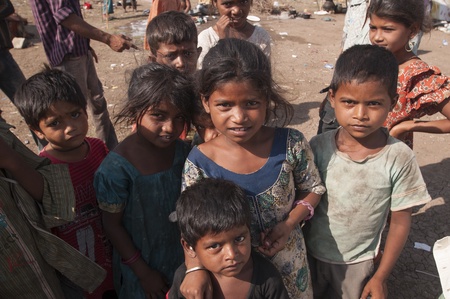The University of Aberdeen is part of a new £19.76m research hub led by the London International Development Centre (LIDC) and the London School of Hygiene & Tropical Medicine (LSHTM) that aims to tackle the problem of stunting in children.
The UKRI GCRF ‘Action against Stunting Hub’ will aim to reduce child stunting by up to 10% across communities in India, Indonesia and Senegal. It is funded by UK Research and Innovation through the Global Challenges Research Fund, which is a key component in delivering the UK AID strategy and puts UK-led research at the heart of efforts to tackle the United Nations Sustainable Development Goals.
Stunting impacts 155-165.8 million children worldwide. In 2012, the World Health Assembly recognised that child stunting was ‘one of the most significant impediments to human development’ and resolved to reduce the number of children under five who are stunted by 40% by 2025. Despite political good will, reducing the world’s stunted children to 100 million is now recognised as largely unachievable.
The ‘UKRI GCRF Action against Stunting Hub’ is an interdisciplinary team comprising researchers from 18 institutions. Running for a five-year period from March 2019 –March 2024, the Hub aims to transform current research on child undernutrition or stunting. The team proposes to change the focus of investigation of child undernutrition from individual components of the problem to the ‘whole child’, understanding the biological, social, environmental and behavioural context in which stunting occurs.
Using this holistic approach, the Hub will undertake a range of child-focused interventions to prevent stunting and even reverse some of the consequences of stunting. The Hub will also support new regional platforms on maternal and child nutrition proposed by UNICEF, linking the work of the Food and Agriculture Organisation, The World Bank, and the World Health Organization at the country level.
Professor Paul Haggarty from the University of Aberdeen Rowett Institute is the deputy lead on the Hub. He said: “This multidisciplinary project is innovative and highly ambitious, bringing together experts across a wide range of disciplines, from international trade to fundamental biology. The value of the Aberdeen contribution is over £1m and the University of Aberdeen is responsible for two key areas of research on the biology of stunting. I will lead the work on epigenetics and Dr Alan Walker, who is also from the Rowett Institute, will lead the work on the microbiome.
“Stunting in children is a complex and difficult problem on a par with the other grand challenges in biology, but it is soluble. It is a fantastic privilege to work with an outstanding international team of researchers on a project that has the potential to improve the lives and wellbeing of the most disadvantaged children and communities across the globe.”
“The practical aims of the biological work are to: develop better methods of identifying biological stunting type; detect children and pregnancies already on the pathway to stunting to prioritise for early intervention; ameliorate or reverse the effects of stunting by developing interventions based on an understanding of deep biology; and prevent stunting by understanding the causes that give rise to different stunting types."
Professor Claire Heffernan, Principal Investigator, LIDC Director, and Professor of International Development at the RVC, who holds a joint appointment with LSHTM, commented:
“LIDC and our hub of 18 world-renowned institutions from the global North and South are delighted to receive this funding from the GCRF. Global efforts to reduce stunting are unlikely to be met, which represents a collective tragedy for the children, families, communities and nations involved. The UKRI GCRF Action against Stunting Hub will pursue much-needed interdisciplinary research that will enhance our understanding of the factors that lead to good growth versus no/slow growth in children living in low and middle income countries.”


